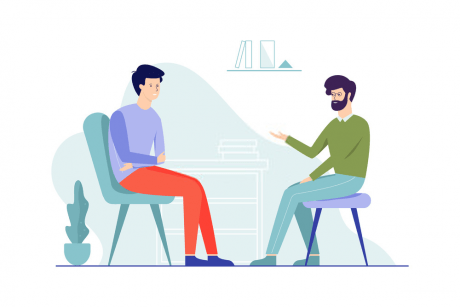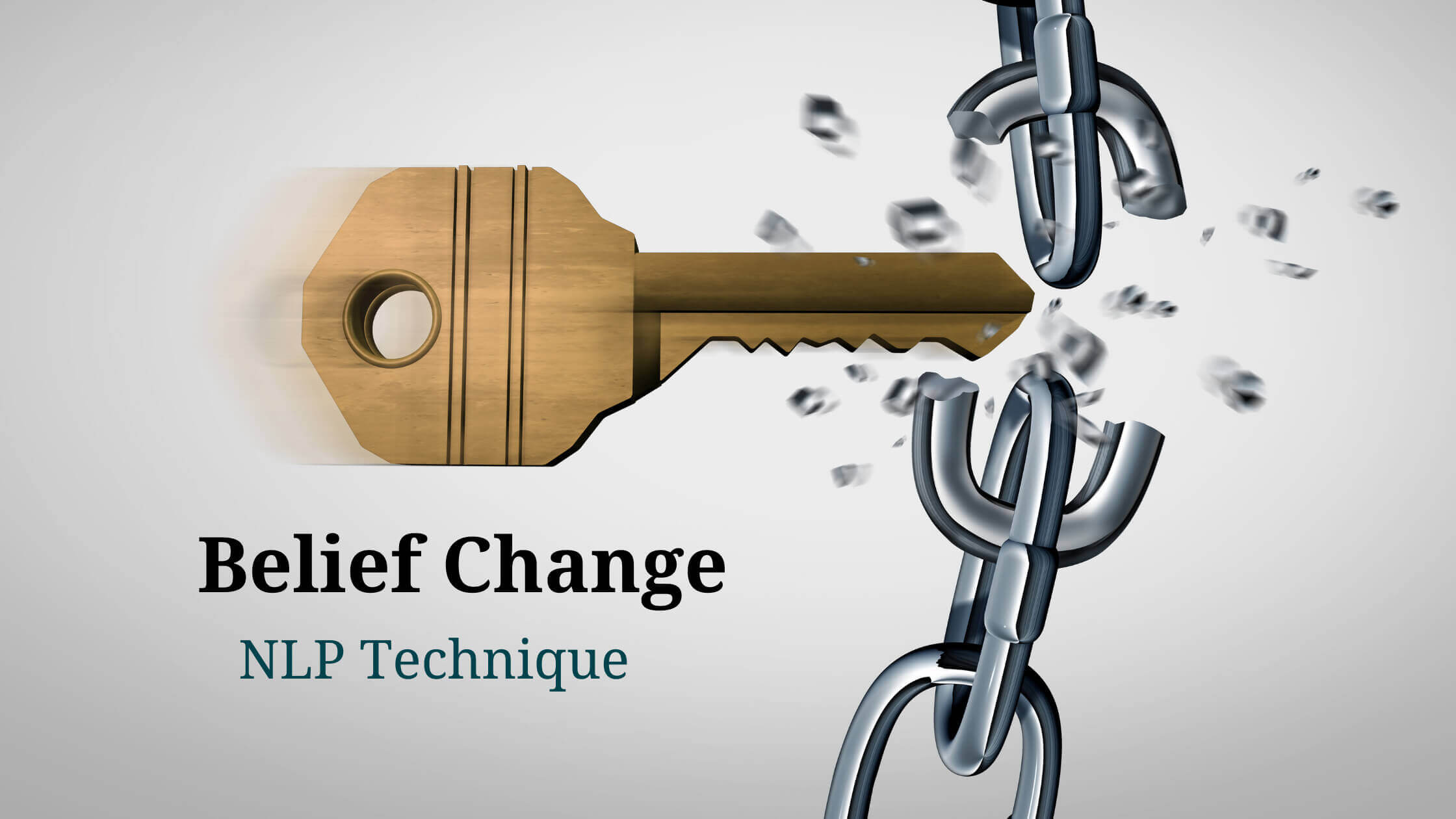Did you know, that the belief change process from Neuro Linguistic Programming can help you help your clients change their beliefs quickly and effectively?
The belief change process from NLP uses the power of submodalities to help clients replace their existing limiting beliefs with the new desired ones.
NLP Belief Change Process

- The first step is to identify the current limiting faith using any of the techniques mentioned in the “How to identify limiting beliefs” post. Let us take the example of the belief “I don’t deserve to be loved” for the purpose of this post.
- The second step is to identify the new desired belief. This will generally be somewhat opposite of the existing limiting belief. When helping clients select the desired belief ensure that the new belief revolves around the client and the client’s skills and is not about others and also that the belief is contextualized and is not too generic. So for the current example let’s say, the belief is “I am deserving of love”
- The third step is to identify a faith that the client earlier believed in but no longer believes in today. For example, let’s say as a child, the client believed studies are a complete waste of time but he or she no longer holds that belief today.
- The fourth step is to identify a belief that the client completely believes in. It may even be an actual fact. For example “Air is necessary to breath”
- The fifth step is to identify the submodalities for each of the four beliefs. We will have another more detailed video on submodalities in this series but for now, we will use visual submodalities.
So let’s say when I think of each of these beliefs my mind forms some images. Visual Submodalities will include the location of these images, the size, the colors, level of brightness, contrast, and so on.
Example of application of NLP belief change process

So when I ask the client to think of the current limiting belief, he can see the image of doing something that he feels guilty about and he sees this image in front of them towards the left, let’s say at position 1.
When I ask the client to think about the new belief, he sees the image of a God that according to him is the source of all existence and hence represents that everyone is deserving of love.
And let’s say he sees this image in front of them towards the right, let’s say at position 2. The images for the belief that he no longer believes in and that he completely is convinced about are let’s say behind them and right in front of them respectively.

For the purpose of this example, I am only using one submodality, that is location. Ideally, with clients, I would use multiple submodalities. Now that we know the location for each of these beliefs, I will ask the client to close their eyes and once again make a note of the positions and locations of these beliefs. Number them as 1, 2, 3 and 4 respectively.
And then I would inform the client that when I say 1, 2, 3 move…. move image 1 to location 3 and image 2 to location 4. Images 3 and 4 remain in their respective positions.
When I am using multiple submodalities I would ask the client to not just change the location of 1 and 2 but also match the other submodalities of 1 with 3 and 2 with 4 and then open their eyes.
Just like we discussed in the video related to SWISH, speed is the key. So after the instructions, I would tell the client 1,2,3 Move and open your eyes. The client immediately opens their eyes.
Next, we will create a brake state, talk about something else for a couple of mins and then test the submodalities for Old and Desired beliefs.
If the client notices that when he thinks about the old belief that he wanted to change, he can see the image at position 3 and the image of the new desired belief at position 4. Next, you can do future pacing with the new belief.
But if the position of the old belief is not 3 or of the new belief is not 4, we repeat the process a few more times till the new locations are set. Each time the process happens really quickly.
In case even after 4 or 5 rounds, the new location is not getting set, then this indicates a presence of positive intention and for that, we will first do the N-step reframing process or the subconscious talk process and then do the belief change process again after the same.
Important things about the NLP belief change process

- The identification of limiting beliefs and desired belief needs to be done before using the process.
- Speed is very important when actually doing the process. To know why, refer to the earlier video on SWISH
- You can do this process with yourself as well and,
- If the process doesn’t work, deal with the positive intention behind holding the limiting belief first.
If you would like to learn about advanced applications of these NLP belief change techniques in coaching and therapy or understand the conceptual background of how and why this process works and what to do when it doesn’t, then I would recommend that you can check out either the Cognitive Hypnotic Coaching or the Cognitive Hypnotic Psychotherapy Diploma.

